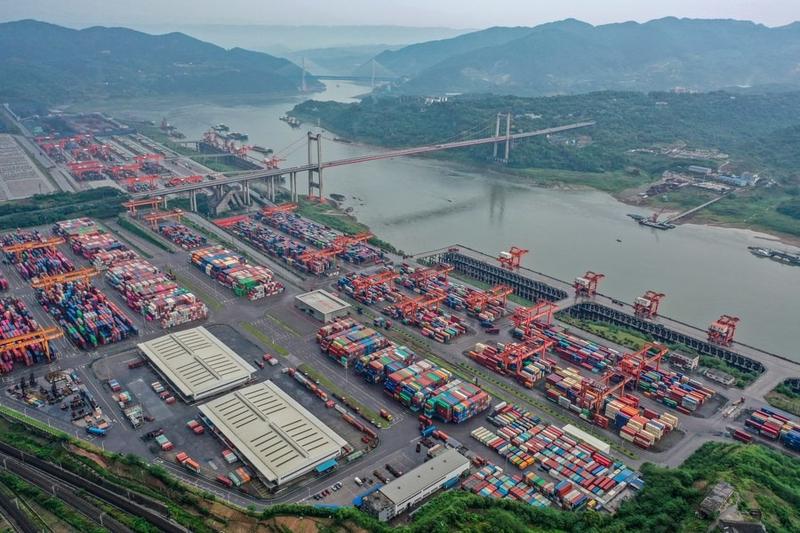Southwest-central China hub provides key transportation routes across region
 This aerial photo taken on April 20, 2023 shows a view of Guoyuan Port in Southwest China's Chongqing. (PHOTO / XINHUA)
This aerial photo taken on April 20, 2023 shows a view of Guoyuan Port in Southwest China's Chongqing. (PHOTO / XINHUA)
As a strategic base for the Belt and Road Initiative, Chongqing in southwest-central China has played a key role over the past decade in connecting it with the Yangtze River Economic Belt and ensuring its high-quality development, according to a senior official in the municipality.
"Promoting the construction of BRI projects has provided strong impetus for Chongqing to break through its bottlenecks and develop itself as an inland open city," Chen Mingbo, a member of the Standing Committee of the CPC Chongqing Committee and executive vice-mayor of the municipal government, said during a recent interview with Xinhua News Agency.
The work has been achieved by improving the transportation network, establishing platforms, promoting economic and trade cooperation, and creating a favorable business environment, he said.
According to Chen, Chongqing has successively explored two major transportation routes — the China-Europe freight train services, and the New International Land-Sea Trade Corridor — striving to open up an international logistics corridor and accelerate the development of an inland international logistics hub.
The railway has connected more than 100 node cities in Europe and Asia, while the corridor has covered 465 ports in 120 countries and regions around the world, Xinhua reported.
"Chongqing will focus on a campaign to expand the channels system led by the New International Land-Sea Trade Corridor and continue to promote the interconnection of open channels," he said, adding that the city will promote the upgrade of infrastructure, optimize the multimodal transportation system and continuously reduce costs and increase efficiency to better integrate into the global market.
"In the past decade, Chongqing has closely focused on integrating large channels, platforms, logistics and industries to promote the continuous expansion of the open economy, the continuous improvement of development quality and efficiency, and the continuous enhancement of international competitiveness and influence," Chen said.
Relying on its advantageous industries such as automobiles and electronic information, Chongqing has vigorously developed import and export trade and explored the BRI market with a focus on ASEAN countries.
The city's annual import and export trade volume with countries involved in the BRI reached 333 billion yuan ($45.7 billion) last year, and has attracted more than 300 Fortune Global 500 companies to invest in Chongqing, Xinhua reported.
For the next step, Chongqing will comprehensively expand its industrial opening-up, focus on building a modern manufacturing cluster system, and consolidate its advantages in trade with Belt and Road countries in industries such as electronic information and automobile manufacturing, Chen said.
"Chongqing has adhered to institutional opening-up as a breakthrough and relied on various national-level open platforms to deepen the opening of flow-oriented goods, services, capital and talent," he said.
"We will make efforts to play a driving role in promoting the joint construction of the Belt and Road Initiative and integrate into a new development pattern," Chen said.
Contact the writers at zhangyu1@chinadaily.com.cn


